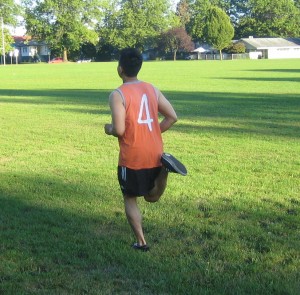Compartment syndrome is a condition that occurs once pressure within the muscles accumulates to high levels which results to pain. The pressure can reduce the flow of blood which prevents nourishment and oxygen from reaching the muscle and nerve cells. This condition can either be acute or chronic.
Remember that compartment syndrome is considered as a medical emergency and usually caused by a severe injury. If not treated promptly, it can lead to lasting muscle damage. A chronic case of compartment syndrome or exertional compartment syndrome is not a medical emergency and often caused by exertion during sports. You can readily manage the symptoms by enrolling in a course on first aid today.
What is compartment syndrome?

Compartment syndrome develops once swelling or bleeding occurs within a compartment. Since the fascia will not stretch, this can lead to accumulated pressure on the nerves, capillaries and muscles within the compartment. The flow of blood to the muscles and nerve cells is disrupted. Without the supply of nutrients and oxygen, the muscle and nerve cells can be damaged.
In an acute case, unless pressure is relieved quickly, lasting disability and tissue death can occur. This does not usually occur in chronic cases of compartment syndrome. The condition typically occurs in the anterior compartment of the lower leg. It can also occur in other compartments in the leg as well as in the feet, hands and buttocks.
Cause
Acute compartment syndrome
This usually develops after a severe injury such as a broken bone or vehicular accident. In rare cases, it can develop after a relatively minor injury.
- Fractures
- Severely bruised muscle
- Crush injuries
- Reestablished blood flow after disrupted circulation
- Tight bandages
- Use of anabolic steroids
Chronic compartment syndrome
The swelling and pain of chronic compartment syndrome is usually triggered by exercise. Those who participate in activities that involve repetitive movements are likely to develop the condition. This can be relieved by stopping the activity and not considered dangerous.
What are the symptoms?
Acute compartment syndrome
- Pain that is intense and aggravated by using or stretching the affected muscles
- Burning or tingling sensations in the skin
- Tightened muscles
- Numbness or paralysis are the late signs that indicate permanent damage on the tissues
Chronic compartment syndrome
The individual experiences pain or cramping during activity and subsides when the activity is stopped. Other symptoms include numbness, difficulty in moving the foot and evident muscle bulging.
Treatment
When it comes to an acute case, it is a surgical emergency and fasciotomy is performed by the doctor. In some cases, the swelling is severe enough that the skin incision cannot be closed immediately. Due to this, the incision is repaired once the swelling subsides.
As for chronic cases, the non-surgical treatment includes orthotics, physical therapy and anti-inflammatory medications. It is important to note that the symptoms subside once the individual stops the activity that caused the condition. In case the non-surgical treatment options fail, surgery might be recommended.
